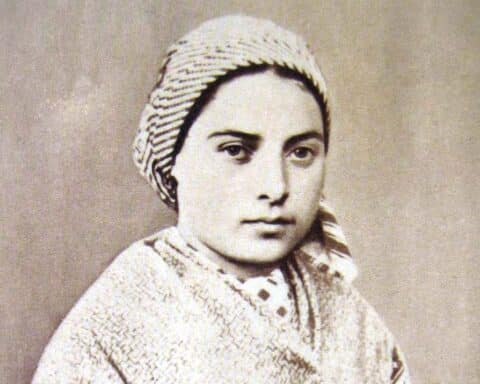Various international agencies report that over 70 million Christians have been murdered for their faith since the time of Christ’s passion. The same agencies claim that upwards of 45 million such murders took place in the 20th century; other reports say as many as 250 Christians are selectively killed each day.
For most Christians in the Western world, these numbers are horrific but impact us little. The atrocities are not highlighted by the media, rarely reported in the national news and not often mentioned from the pulpit. We in the West are free to worship Our Lord Jesus publicly, go to Mass on Sunday or even daily, attend Religious Education classes, gather in Eucharistic adoration, march in the Corpus Christi procession, get our children baptized, all without worry that some group or our government is going to deny us any of these actions. We live in a free society. Yet there are Christians throughout the world who are ostracized, persecuted and even murdered for attempting any of these acts we take for granted. They are the martyrs of today.
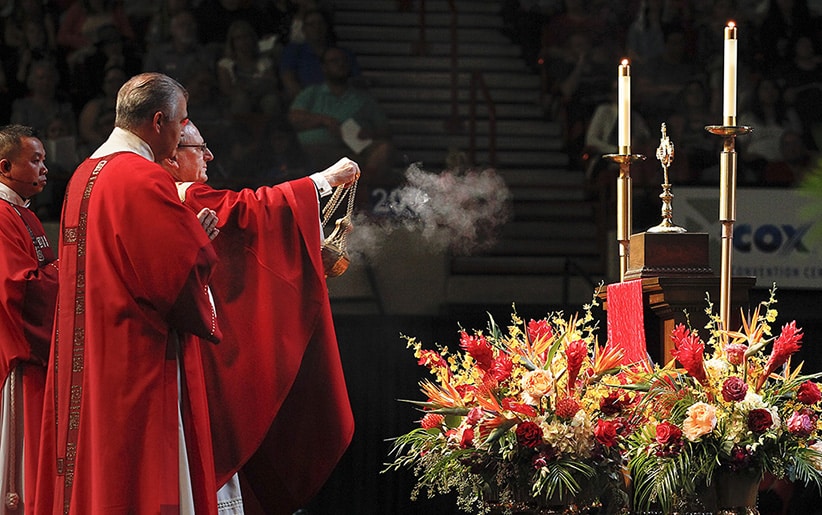
Pope St. John Paul II (r. 1978-2005) addressed martyrs of our time in his November 1994 apostolic letter, Tertio Millennio Adveniente. The pontiff wrote: “At the end of the second millennium, the Church has once again become a Church of martyrs. The persecution of believers — priests, religious and laity — has caused a great sowing of martyrdom in different parts of the world. … This witness [to Christ] must not be forgotten. … In our own century the martyrs have returned, many of them nameless, ‘unknown soldiers’ as it were of God’s great cause. As far as possible, their witness should not be lost to the Church. … [The] local Churches should do everything possible to ensure that the memory of those who have suffered martyrdom should be safeguarded, gathering the necessary documentation.”
Pope St. John Paul II is clearly telling us these martyrs, these holy people who gave up their blood for Our Lord Jesus Christ, should not be unknown. The pope discussed martyrs in the early Church: “By proclaiming and venerating the holiness of her sons and daughters, the Church gave supreme honor to God himself: in the martyrs she venerated Christ who was at the origin of their martyrdom and of their holiness.” These first martyrs are honored in the Church liturgy, some names included in our Eucharistic prayers and in the Litany of the Saints. We should not somehow dismiss or overlook those of our era.
Numerous countries in the world today take their anti-Christian policies from the second and third century Roman play book. The Romans of that era persecuted Christians because those people chose to follow Jesus Christ, who, the Romans were convinced, was a political threat to their empire. He had been arrested, accused, tried without defense or proper jury, and then crucified. The Romans wanted the first followers of Christ to reject him. They would give Christians the opportunity to deny Jesus and the Good News he taught. When the Christian refused, they were jailed, tortured, and many became martyrs. If the Christian confessed his or her belief and somehow was not killed, the Church considered him or her as confessors. One difference, today, is that many countries skip even the appearance of a trial but incarcerate, torture and even murder thousands of Christians simply because they believe in the teachings of Christ. Those dying for Christ should not be nameless and unknown; amongst them are martyrs or even saints.
Steps to sainthood
Most individuals entered in the cause for sainthood by Holy Mother Church go through the arduous canonization process of being identified as servant of God, then venerable, then blessed and finally saint. First, the individual is screened to determine if they lived a life of heroic virtue including practicing the cardinal virtues of prudence, temperance, fortitude and justice along with the theological virtues of faith, hope and charity. A complete investigation of the individual is conducted at the diocese level. If the investigation is positive and the Holy See finds no objection, then the proposed saint is known as a servant of God. If after a detailed Vatican review, the pope agrees that the person’s life was one of heroic virtue, then the person can be named venerable. To proceed on, two miracles are required, one for beatification and one for canonization. Being identified as a martyr may eliminate the miracle needed for beatification.
| Pope Francis on Christian persecutions and martyrs today |
|---|
|
“Persecution is rather like the ‘air’ that Christians breathe even today. Because even today there are many martyrs, many people who are persecuted for their love of Christ. There are many countries where Christians have no rights. If you wear a cross, you go to jail. And there are people in jail. There are people condemned to death today simply because they are Christians. The number of people killed is higher than the number of early martyrs. It’s higher! But this doesn’t make the news. Television newscasts and newspapers don’t cover these things. Meanwhile people are being persecuted.” — Pope Francis in a homily on June 1, 2018 |
Martyrdom and sainthood
Martyrdom is one way to sainthood in the Catholic Church; that is, a Catholic Christian chooses to die rather than deny Jesus Christ or the Gospels. Among the early believers, many gave up their lives for Jesus. A well-known example of a Christian willing to die for Jesus is exemplified in the martyrdom of Bishop Thascius Cyprian. On Sept. 14, 258, Bishop Cyprian — later St. Cyprian — was commanded by the Romans to revere or honor the Roman gods and thus deny Jesus. Cyprian replied, “I will not do so.” He was subsequently charged by Galerius Maximus, the governor of Carthage: “You have long lived with your sacrilegious convictions, and you have gathered about yourself many others in a vicious conspiracy. You have set yourself as an enemy of the gods of Rome and our religious practices. … [The] most noble of Caesars have been unable to draw you back to the observance of their holy ceremonies. You have been discovered as the author and leader of these heinous crimes, and will consequently be held forth as an example of all those who have followed you in your crime. By your blood the law shall be confirmed.” Cyprian was executed by the sword. Many early Christians would be executed, for refusing to reject or deny Jesus, at the hands of those who hated the Faith. This was the classic example of martyrdom as largely perceived for centuries. The definition or understanding of martyrdom would be modified because of the events of World War II.
St. Maximilian Kolbe
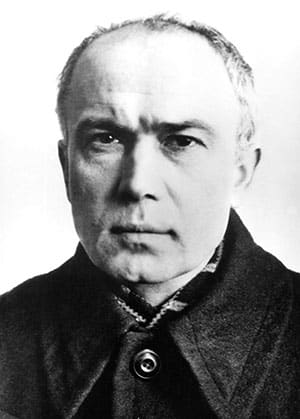
During World War II, the Nazis persecuted Christians ostensibly because they were considered enemies of the state; their practices and Christian ethics ran counter to and were seen as threatening the National Socialist government. The Nazis arrested Christians for a variety of reasons, including for treason, befriending a Jew, speaking against the government and inciting people. The Nazis purposely sought not to make martyrs out of Christians but treated and even punished them as criminals. Hitler allegedly said that his countrymen could either be a German or a Christian but not both. Thousands of Christians were rounded up, imprisoned and many sent to concentration camps. There, along with other prisoners, they were brutalized, often murdered or just disappeared. Christians sent to concentration camps included thousands of members of the clergy like Father Maximilian Kolbe (1894-1941).
Father Kolbe, a Polish priest, was imprisoned by the Nazis in 1941 and held in the Auschwitz, Poland, concentration camp. One night a prisoner escaped from the camp. In retribution, the Nazis selected 10 prisoners from the escapee’s cell block to die in the camp’s starvation bunker. One of those selected pleaded that he was a husband and father. When Father Kolbe heard the plea, he offered himself as a replacement, and the Nazis accepted him instead. In the starvation bunker, where their only substance was their own urine, five of the men died within two weeks. The Nazis, anxious for the remaining men to die so the bunker could be used to starve others, injected carbolic acid into the bodies of those still alive, including Father Kolbe. Father Maximilian Kolbe was murdered and died on the vigil of the Feast of the Assumption, Aug. 14, 1941. To remove any evidence of what had taken place, the bodies of the prisoners were quickly cremated. The prisoner replaced by Father Kolbe lived to tell about the incident.

Father Kolbe’s cause for canonization went through all the steps leading to beatification, including being named a confessor and the verification of a miracle. He was beatified by Pope St. Paul VI (r. 1963-78) in 1971. For his selfless act of giving his life for another, Kolbe was given an honorary title, Martyr of Charity. By 1979 the additional requirements for sainthood had been accomplished and canonization was planned.
Pope St. John Paul II wanted Father Kolbe’s canonization to include declaring him a martyr without reservation. He asked a Vatican committee to determine if Kolbe could be named a martyr. The committee concluded that Kolbe did not die defending the Faith or because of hatred of the Faith — odium fidei — and thus was not a martyr based on the traditional Church definition. John Paul had another view. In the canonization ceremony of Oct. 10, 1982, the pope said: “Does not this death — faced spontaneously, for love of man — constitute a particular fulfillment of the words of Christ? Does not this death make Maximilian particularly like unto Christ — the model of all martyrs — who gives his own life on the cross for his brethren? Does not this death possess a particular and penetrating eloquence of our age? Does not this death constitute particularly authentic witness of the Church in the modern world? And so, in virtue of my apostolic authority, I have decreed that Maximilian Maria Kolbe who after his beatification was venerated as a confessor — shall henceforth be venerated as a martyr!”
From this time, martyrdom encompassed not only Christians who refused to deny Jesus and killed by those with hatred for the faith but also Christians who died doing a righteous act or acts because of their faith, because of their Christian conscience. Kolbe is a perfect example but there are more. Some recently beatified saints demonstrate how the scope to the term martyrdom is expanding within the Church. They include: Archbishop Oscar Romero, Christian Brother James Miller and Father Stanley Rother.
| A nun’s response to the Nazis |
|---|
|
One story from Robert Royal’s book “The Catholic Martyrs of the Twentieth Century” concerns a Catholic nun. Nuns, both collectively and individually, were a thorn in the side of the Nazis during World War II. “One SS officer chided a nun, ‘… within ten years you will be honoring Adolph Hitler on those altars where you now adore Christ.’ The unafraid the nun replied: ‘If Hitler is prepared to die on the cross for his people and then rise from the dead on the third day, I’ll change my habit for a Nazi uniform – but not before.'” |
St. Oscar Romero
In 1977, Bishop Oscar Romero (1917-80) was named Archbishop of the important Diocese of San Salvador in El Salvador. This seemed to be a carefully calculated move especially supported by the national government at the time. Romero was viewed as someone who would not make waves regarding the ongoing suppressive acts and methods of the national government, and that he would control any attempt by the people to rise up against state led corruption. But that is not what happened. Romero became an advocate, a voice and champion of the people.

In the years before being named archbishop, he had been the bishop of a rural diocese, Santiago de María, where he witnessed the economic inequality and the oppressive conditions of the populace brought on by an unscrupulous government. These conditions were exacerbated by an ongoing struggle between the controlling government and guerrillas trying to overthrow those in power. In the crosshairs were the ordinary citizens who were clearly economically suppressed, living in poverty with wages so meager that people struggled to exist. Trying to oppose or rebel against these conditions resulted in murder by the military or police who were closely aligned with the government. Romero began to speak out against these conditions which he saw as destroying his nation and people. His public speeches and pleas for reconciliation, changes to social conditions met with condemnation both inside and outside the Church as well as in the media.
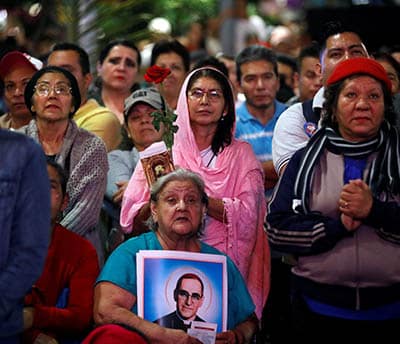
In October 1979, a military dictatorship took over the government of El Salvador, and shortly thereafter atrocities against the people escalated, including mass murders, kidnapping and unjust incarcerations. Just as was the case in Nazi Germany, some people simply disappeared. Against the human rights abuses, hatred, violence and disorder, Archbishop Romero responded in every way he could and especially called out the military for their heavy-handed brutality and atrocities. In one of his final speeches, using his diocese radio station, he addressed himself to the military: “In the name of God, and in the name of this suffering people, who laments rise to heaven each day more tumultuous, I beg you, I beseech you, I order you in the name of God. Stop the repression.”
Two days after that speech, Archbishop Romero was celebrating Mass at the Divine Providence hospital in El Salvador. An assassin entered a church door and with one shot murdered the archbishop. The murderer has never been brought to justice.
Both Pope St. John Paul II and Pope Francis named Archbishop Romero a martyr, and he was canonized by Pope Francis on Oct. 14, 2018. Archbishop Romero is the first El Salvadoran saint.
Blessed Brother James Miller

Christian Brother James Miller (1944-82) was murdered, shot several times and died on Feb. 13, 1982, while doing charitable work, assisting in repairs at the Indian Center in Huehuetenango, Guatemala. Beginning in 1969, James served his community, the U.S. based Institute of the Brothers of the Christian School, first in Nicaragua from which he was withdrawn because of a 1979 revolution, and then two years later in Guatemala. In Huehuetenango, James and other brothers were training local young native men in agricultural methods. The state military wanted young men for the military and used force to conscript them. The understanding was that those training at the Indian Center were exempt from military service. Many times the boys at the center were called for service, which then required the brothers to go to the government officials and prove the boy’s exemption status. These confrontations were mostly argumentative and disagreeable — the local officials did not like the brothers’ interference nor their growing influence in the Indian community. There is widespread belief that James was murdered as a message to the other brothers to stay out of government affairs.
Earlier, some of his friends had encouraged James to leave Guatemala, but he said, “my commitment to my vocation grows steadily stronger in the context of my work in Central America. I pray to God for the grace and strength to serve Him faithfully by my presence among the poor and oppressed of Guatemala. I place my life in his providence; I place my trust in him.” In July 2010, James was named a servant of God, and on Nov. 8, 2018, Pope Francis declared him a martyr, saying that James had been killed in hatred of the Faith. The beatification ceremony for Blessed James Miller was held in December 2019.
Blessed Father Stanley Rother
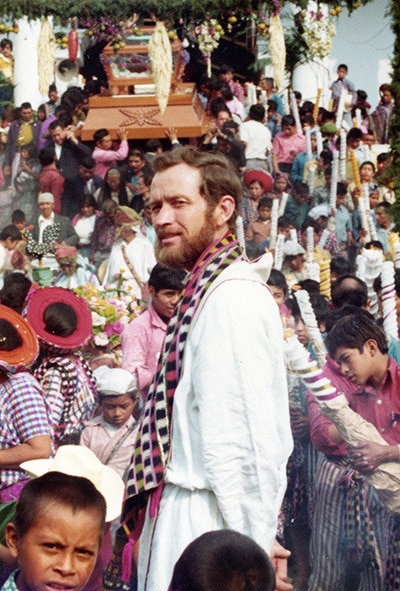
was murdered in 1981 in the Guatemalan
village where he ministered to the
poor, is pictured in an undated photo.
CNS photo/Dave Crenshaw, Eastern Oklahoma Catholic
Another of God’s children murdered because of his unshaken faith and dedication to his Savior was Father Stanley Rother. Father Rother (1935-81), from the Diocese of Oklahoma, was assigned as a missionary priest to the Indian mission in Santiago Atitlan, Guatemala, where he would serve from 1968 until his death in 1981. Beloved to the people in this rural community, he not only served as their pastor but, because he was raised on a farm, worked alongside the people in the fields. He helped create a farmer’s cooperative, a credit union, and was instrumental in the building of a hospital and radio station.
Civil war threatened the country in 1980, and repression of the Church began. Parishioners were kidnapped and killed. Father Stanley’s life was in danger, but at first he refused to leave the country, writing: “I am not ready to leave here just yet. … [If] it is my destiny that I should give my life here, so be it. … I don’t want to desert these people.” Eventually he became a target and in January 1981 returned to Oklahoma City. But before Easter that same year, he went back to his flock. On July 28, 1981, Father Stanley confronted three men who had broken into his sacristy. He was shot twice and died. He was named a martyr and on Sept. 23, 2017, was beatified in Oklahoma City.
Cardinal Angelo Amato, representing Pope Francis at the beatification, said, “The murder of Father Rother was a real and true martyrdom in odium fidei (in the hatred of faith).” Father Stanley Rother is the first U.S. born priest to be beatified.
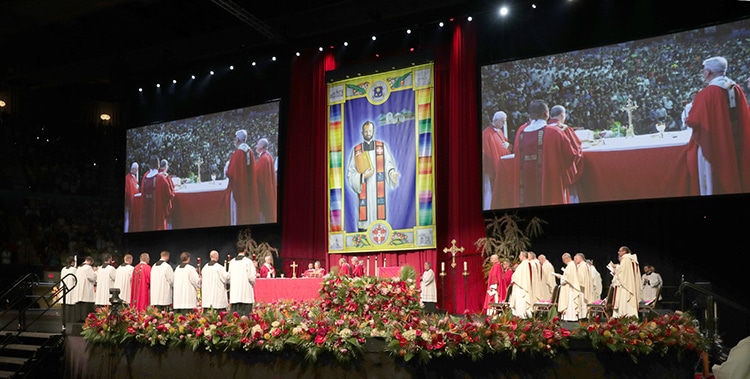
The identification of Sts. Kolbe and Romero, Blesseds Rother and Miller and others as dying in odium fidei indicates how the Holy Fathers have chosen to use or define martyrdom in addition to what has been the accepted practice.
D. D. Emmons writes from Pennsylvania.
| New way to beatification – ‘Offer of Life’ |
|---|
| In July 2019, Pope Francis issued an apostolic letter, Majorem Hac Dilectionem (“Greater love than this”), in which he established an additional way to beatification, the “Offer of Life.” His letter begins by pointing out that there are Christians who “have voluntarily and freely offered their life for others and preserved this determination unto death.” According to the pope, these Christians are deserving of “special consideration and honor.” Their “heroic offering of life … is deserving of that admiration that the community of faithful customarily reserves to those who have voluntarily accepted the martyrdom of blood and exercised Christian virtues to a heroic degree.”
The apostolic letter includes 36 articles or norms, beginning with Article 1: “The offer of life is a new cause for the beatification and canonization procedure, distinct from the causes based on martyrdom and the heroism of virtues.” Among the articles, Article 2 identifies the criteria for validating that someone satisfies this new cause for beatification beginning with “(a) a free and voluntary offer of life and heroic acceptance propter caritatem of a certain and untimely death.” This article and the criteria continues: “(b) a nexus [connection] between the offer of life and premature death; (c) the exercise, at least as ordinarily as possible, of Christian virtues before the offer of life and, then, unto death; (d) the existence of a reputation of holiness and of signs, at least after death; (e) the necessity of a miracle for beatification, occurring after the death of the Servant of God and through his or her intercession.” The remaining articles of Francis’ letter address and modify certain existing norms in two 1983 documents: the Apostolic Constitution, Divinus perfectionis Magister, and the Normae servandae in inquisitionibus ab Episcopis facendis in Causis Sanctorum (norms to be observed in inquiries made by bishops in the Causes of Saints). Exactly how this will all be implemented in the beatification and canonization process is for the future to tell. Looking back, perhaps it would have been a consideration during the cause of Kolbe and others mentioned in this article. Looking forward, any — God forbid — other people murdered because they are Christians may be evaluated for beatification using this new criterion. |





